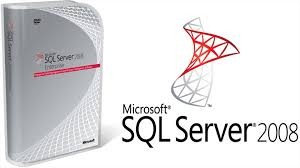 21. What is XML Datatype?
21. What is XML Datatype?
The xml data type lets you store XML documents and fragments in a SQL Server database. An XML fragment is an XML instance that is missing a single top-level element. You can create columns and variables of the xml type and store XML instances in them. The xml data type and associated methods help integrate XML into the relational framework of S Server.
22. What is Data Compression?
In SQL SERVE 2008 Data Compression comes in two flavors:
Row Compression: Row compression changes the format of physical storage of data. It minimize the metadata (column information, length, offsets etc) associated with each record. Numeric data types and fixed length strings are stored in variable-length storage format, just like Varchar.
Page Compression: Page compression allows common data to be shared between rows for a given page. Its uses the following techniques to compress data:Dictionary Compression: Dictionary compression searches for duplicate values throughout the page and stores them in CI. The main difference between prefix and dictionary compression is that prefix is only restricted to one column while dictionary is applicable to the complete page.
Row compression.
Prefix Compression. For every column in a page duplicate prefixes are identified. These prefixes are saved in compression information headers (CI) which resides after page header. A reference number is assigned to these prefixes and that reference number is replaced where ever those prefixes are being used.
23. What is Catalog Views?
Catalog views return information that is used by the SQL Server Database Engine. Catalog Views are the most general interface to the catalog metadata and provide the most efficient way to obtain, transform, and present customized forms of this information. All user- available catalog metadata is exposed through catalog views.
24. What is PIVOT and UNPIVOT?
A Pivot Table can automatically sort, count, and total the data stored in one table or spreadsheet and create a second table displaying the summarized data. The PIVOT operator turns the values of a specified column into column names, effectively rotating a table.
UNPIVOT table is reverse of PIVOT Table.
25. What is Dirty Read ?
A dirty read occurs when two operations say, read and write occurs together giving the incorrect or unedited data. Suppose, A has changed a row, but has not committed the changes. B reads the uncommitted data but his view of the data may be wrong so that is Dirty Read.
26. What is Aggregate Functions?
Aggregate functions perform a calculation on a set of values and return a single value. Aggregate functions ignore NULL values except COUNT function. HAVING clause is used, along with GROUP BY, for filtering query using aggregate values.
Following functions are aggregate functions.
AVG, MIN CHECKSUM_AGG, SUM, COUNT, STDEV, COUNT_BIG, STDEVP, GROUPING, VAR, MAX. VARP
27. What do you mean by Table Sample?
TABLESAMPLE allows you to extract a sampling of rows from a table in the FROM clause. The rows retrieved are random and they are not in any order. This sampling can be based on a percentage of number of rows. You can use TABLESAMPLE when only a sampling of rows is necessary for the application instead of a full result set.
28. What is the difference between UNION and UNION ALL?
UNION The UNION command is used to select related information from two tables, much like the JOIN command. However, when using the UNION command all selected columns need to be of the same data type. With UNION, only distinct values are selected.
UNION ALL The UNION ALL command is equal to the UNION command, except that UNION ALL selects all values.
The difference between Union and Union all is that Union all will not eliminate duplicate rows, instead it just pulls all rows from all tables fitting your query specifics and combines them into a table.
29. What is B-Tree?
The database server uses a B-tree structure to organize index information. B-Tree generally has following types of index pages or nodes:
root node: A root node contains node pointers to branch nodes which can be only one.
branch node: A branch node contains pointers to leaf nodes or other branch nodes which can be two or more.
leaf nodes: A leaf node contains index items and orizantal pointers to other leaf nodes which can be many.